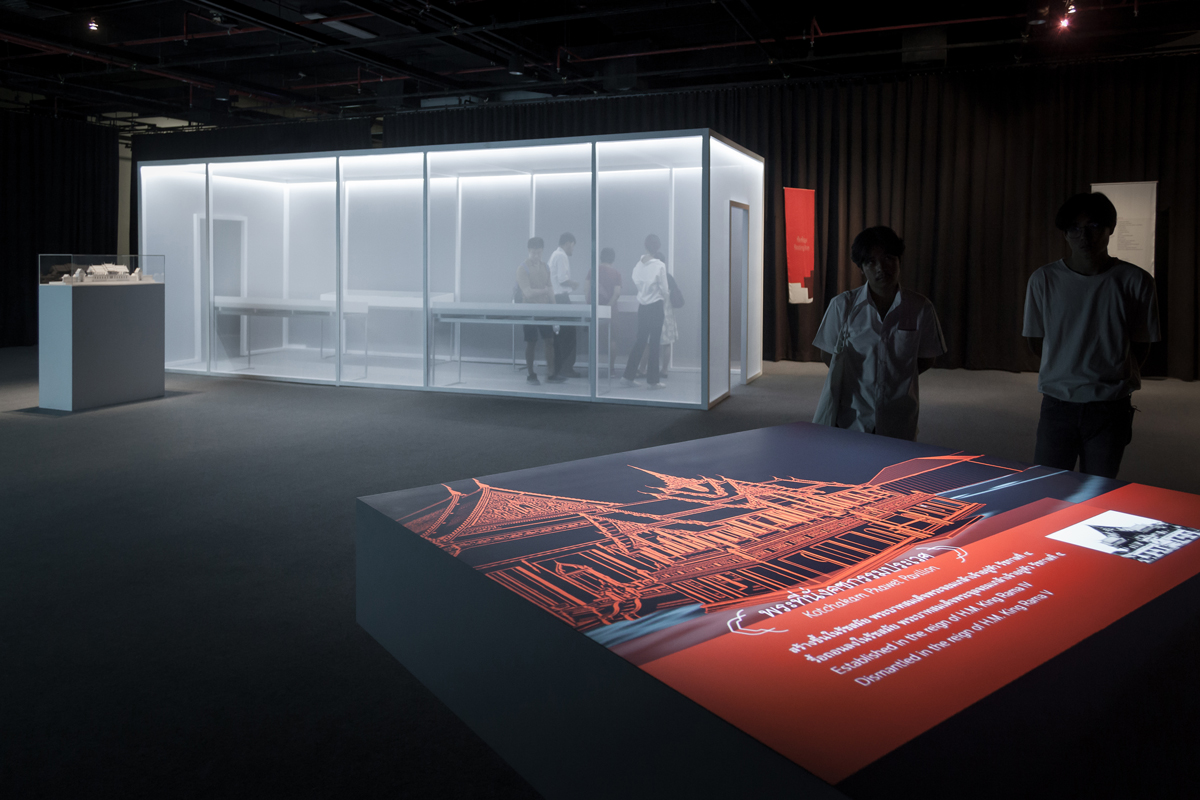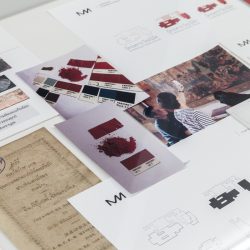ARCHITECTS, SCHOLARS AND CURATORS TEAM UP TO ARCHITECTURALLY AND TECHNOLOGICALLY BRING THE HISTORY ONCE LOST OF WANG NA TO THE FORE
The perception most Thais have for the Fine Arts Department is either a conservative governmental department full of (old) officers who work with the past and history, go out and restore ancient buildings here and there or the people responsible for the design of architecture for the country’s important ceremonies.
All the aforementioned definitions are only part of what the Fine Arts Department can and is doing (and will be doing). But in reality, what is this small department under the Ministry of Culture is really capable of, apart from archiving important documents, restoring ancient art objects, preserving the country’s literature, music and performance art as well as repairing all the important pieces of architecture? Not that many people know that what the Fine Arts Department does as a major part of its work is to conduct historical and archaeological studies and research. Imagine the volume of studies that have been done on the history of our country throughout the period of over a century since the department was first established. It’s a shame that these studies haven’t really been recognized among a wider audience or if they do, they’re in the form of research papers that we common folks are dreading to read let alone really understand the stuff that is written in them. These forgotten pieces of knowledge and findings are probably one of the reasons why Thai people have never been aware of the amazing things their country has.

A model of the dismantled High Pavilion is made of a white material interpreting the idea of architectural imagination
The story about the study of the Front Palace (Wang Na) and the archeological excavation that took place five years ago would have faced the same ending as other works of research done by the Fine Arts Department where all the useful evidence and information are put together and archived away after the completion of the project—if it hadn’t beenfor Sirikitiya Jensen, the daughter of H.R.H. Princess Ubolratana Rajakanya Sirivadhana Barnavadi. With the vigorous incorporation of technology, Miss Jensen brings back the Front Palace (Wang Na) study project, which eventually gave birth to the exhibition, ‘The Architectural Ensemble of Wang Na.’ The presentation of a series of information in the form of an exhibition is nothing new compared to what the Fine Arts Department has done before, but the way the exhibition approaches history and architecture with the use of modern technology is what makes the exhibition interesting. And while such approach creates something that the Thailand 4.0 viewers find to be easy to digest, it is also the reason why we feel like there is something missing about The Architectural Ensemble of Wang Na.
The description labels provide very brief information about the timeline of the area’s evolving history. The interactive map displays the perimeter of the Front Palace then and now while the touchscreen projector displays the details about the speculated location of the Kotchakam Prawet Pavilion and the High Pavilion. Models, a projection screen, and even a Reading Room are used to present viewers the origin and background of the exhibition’s narrative, allowing them to pursue further studies on their own with The Architectural Ensemble of Wang Na as the starting point. These elements, which are introduced to help tell the stories of the Front Palace, in a way, live up to their roles considering how the overall storytelling is done interestingly. But the question is what else can these technologies communicate to the viewer in addition to these past studies. Does the exhibition successfully and effectively facilitate a sense of connection between the viewers and something quite abstract like history and memories (of the city) that they are able to relate themselves to the stories of the Front Palace, which the project’s director Sirikitiya Jensen and sibling curators, Chitti and Kittitorn Kasemkitvatana intend to achieve?
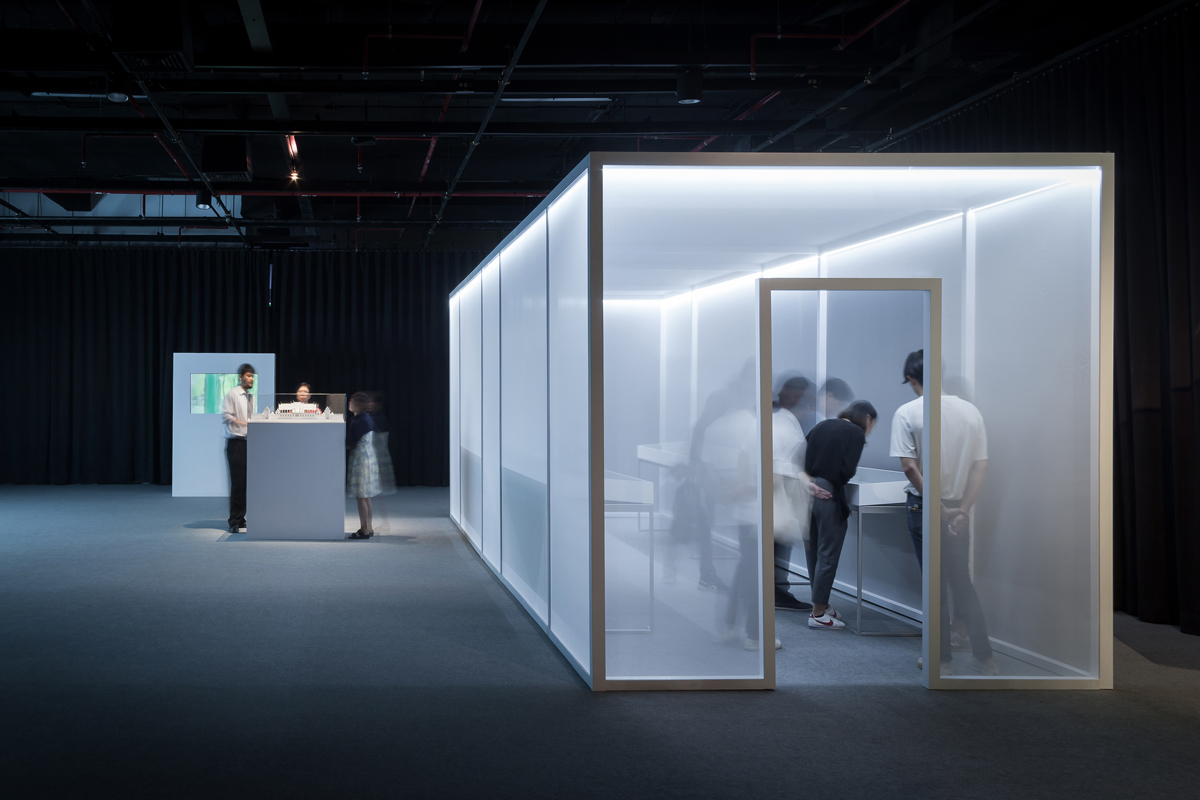
The space between all the elements of the exhibition allows for interpretation to take place
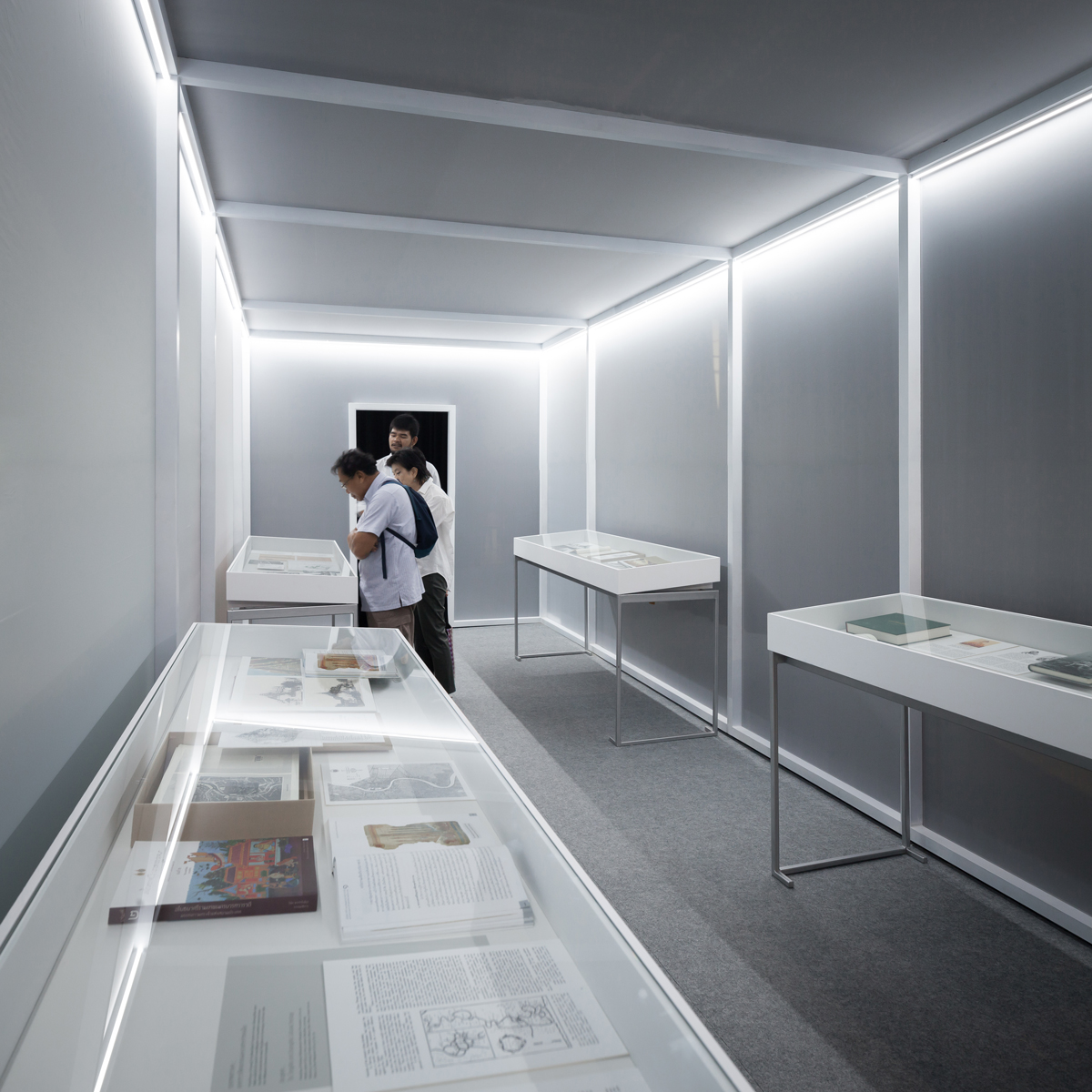
The column spanning the Reading Room duplicates that of the Issara Winitchai Throne Hall of the National Museum, Bangkok
The exhibition was conceived from the idea of ‘reading’ the intangibles and exploring the translation of information into a visual language to visualize something that no longer exists. Many of the details of the design are derived from the history of the Front Palace and serve almost as physical representations of its once lost narrative. One can see such from different elements and the way the exhibition is designed, whether it be the technologies developed by Bit Studio, the structure the Reading Room developed from the column span in Issara Winitchai Throne Hall by Thakol Khaosa-ad, or even the graphics system through which Means Design Studio explores the actual site where the Front Palace was located and incorporates the mural painting and masterplan in Phutthaisawan Throne Hall into the design of the colors and logo of the exhibition. But what’s missing is sufficient explanation that should be included in the exhibition because without designated staff, we doubt that most people will not know about all these miscellaneous details. Another failure of the exhibition is the way it relies on online media the almost sole source of information. Such method is beneficial in the way that it allows for the information to reach a wider audience within a short period of time, while the tone of the storytelling is very casual and easy to understand. But we still think it would be better for the exhibition to have a set of information that is critical enough to link everything together so that viewers are able to attain a better understanding of the history, architecture and evolution of the city, in their own context, and through their own personal experiences. It could be in the conventional printed form of an exhibition catalogue or other technologies that the creators of the exhibition wish to use.
The Architectural Ensemble of Wang Na: Part 1 exhibition was held at the Studio Room on the 4th floor of Bangkok Art and Culture Center and recently ended on the 27th of June 2018. The exhibition was quite a success in the sense that it promoted some interesting information and knowledge about the Front Palace to a wider audience, despite the rather short time period during which it was held. How the second part of the exhibition, in which all the contents will be presented in the form of a website, will turn out to be is something that remains to be seen. As for the third part, which is scheduled to take place at the end of this year at the Front Palace itself (now the home of the National Museum), what will change, will there be something more interesting to see, and will this return to home, to the grounds where the Front Palace once stood on, be able to reconnect past memories to the contemporary world like the project intends? We hope it does.
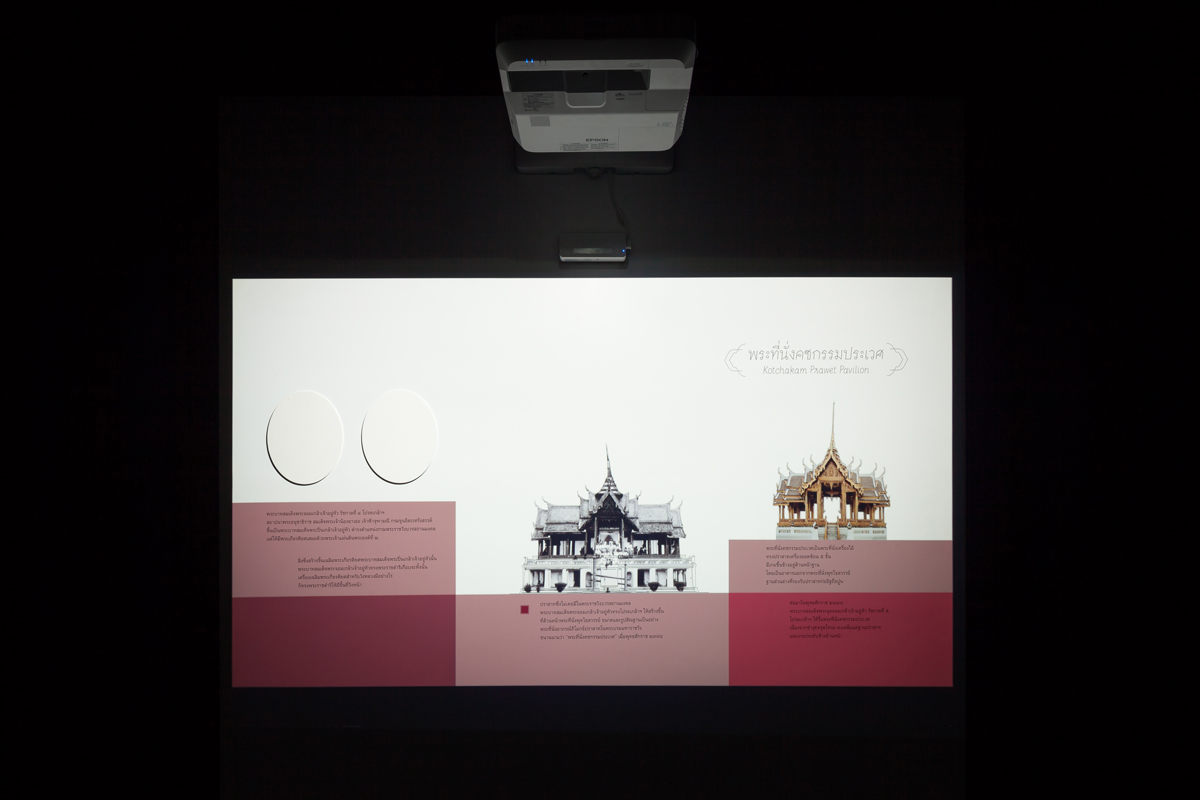
ถ้าไม่เป็นศูนย์รวมของผู้คน (สูงวัย) ที่ต้องทำงานกับอดีตและประวัติศาสตร์ของชาติ ที่ชวนให้คนภายนอกมองว่าเป็นพื้นที่ของความเก่าคร่ำครึและอนุรักษนิยม เชื่อว่า perception ของคนไทยส่วนใหญ่ที่มีต่อ “กรมศิลปากร” ก็คงจะหนีไปไม่พ้นหน่วยงานรัฐที่มีหน้าที่ออกไปซ่อมแซมโบราณสถานตามพื้นที่ต่างๆ และก็อาจจะเพิ่มหน้าที่ในการออกแบบสถาปัตยกรรมสำหรับพระราชพิธีสำคัญๆ อย่างที่เรารับรู้กันในช่วงสองปีมานี้
แน่นอนว่านิยามต่างๆ ที่ยกตัวอย่างมานี้เป็นแค่ส่วนหนึ่งของสิ่งที่กรมศิลปากรได้ทำและกำลังทำอยู่ (รวมถึงที่จะทำต่อไป) แต่แล้วความเป็นจริงหน่วยงานรัฐเล็กๆ สังกัดกระทรวงวัฒนธรรมแห่งนี้ทำอะไรกันอีกบ้าง? นอกเหนือไปจากการจัดเก็บเอกสารสำคัญอนุรักษ์ซ่อมแซมศิลปวัตถุ ทำนุบำรุงวรรณกรรม ดนตรี ศิลปะการแสดง และบูรณะปรับปรุงสถาปัตยกรรมสำคัญต่างๆ อย่างที่พูดถึงไปแล้ว อีกอย่างที่น้อยคนจะรู้ว่าพวกเขาทำ ซึ่งจริงๆ เป็นส่วนสำคัญอันหนึ่งเลยของการทำงานต่างๆ ต่อมาคือการศึกษาวิจัยทางประวัติศาสตร์และโบราณคดี ลองจินตนาการดูว่าตั้งแต่ที่กรมศิลปากรก่อตั้งขึ้นมาจนถึงปัจจุบันก็ร่วมร้อยกว่าปี จะมีการศึกษาเกี่ยวกับประวัติศาสตร์ความเป็นเราจำนวนมากมายมหาศาลแค่ไหน น่าเสียดายที่ของเหล่านี้ถ้าไม่โดนเก็บลงกรุไปเสียก่อน ก็ไม่ค่อยจะได้รับการเผยแพร่เป็นวงกว้างสักเท่าไร หรือถึงเผยแพร่ออกมา ก็มักอยู่ในรูปแบบของงานวิจัยที่คนแบบเราๆ ประชาชนทั่วไป ต้องใช้เวลาในการทำความเข้าใจจนรู้สึกขยาด จนหลายครั้งก็พาลทำให้เกิดสาเหตุว่าทำไมคนไทยถึงไม่ค่อยรู้ว่าบ้านเรายังมีอะไรดีๆ อยู่อีกมาก
เรื่องราวของโครงการศึกษาวังหน้าและขุดค้นทางโบราณคดีที่เกิดขึ้นเมื่อประมาณ 5 ปีก่อน ก็คงจะมีชะตากรรมไม่ต่างอะไรไปจากการศึกษาวิจัยอื่นๆ ของกรมศิลปากรเลย ที่หลักฐานและข้อมูลที่เป็นประโยชน์จำนวนมากถูกรวบรวมขึ้นมา และพับเก็บลงไปเมื่อจบโครงการ ถ้าหากไม่ได้สิริกิติยา เจนเซน ธิดาในทูลกระหม่อมหญิงอุบลรัตนราชกัญญา สิริวัฒนาพรรณวดี เข้าไปรื้อฟื้นมันกลับขึ้นมาเป็นโครงการศึกษาพระราชวังบวรสถานมงคล (วังหน้า) และสื่อความหมายด้วยเทคโนโลยี จนเกิดเป็นนิทรรศการ ‘วังน่านิมิต’ ในที่สุด การเลือกที่จะนำเสนอชุดข้อมูลออกมาในรูปของนิทรรศการอาจจะไม่ใช่สิ่งแปลกใหม่สักเท่าไรเมื่อเทียบสิ่งที่กรมศิลปากรเคยทำมาตั้งแต่อดีต แต่การ approach ประวัติศาสตร์สถาปัตยกรรมด้วยการอาศัยเทคโนโลยีสมัยใหม่เข้ามาช่วยเป็นหลักต่างหากที่สร้างความน่าสนใจให้กับงานในครั้งนี้ ซึ่งก็ดูจะเป็นของย่อยง่ายเลยทีเดียวสำหรับคนไทยในยุคสมาร์ทโฟน 4.0 แบบนี้ แต่นั่นก็เป็นเหตุผลเดียวกันที่ทำให้วังน่านิมิตยัง “ขาด” อะไรบางอย่างไปในฐานะนิทรรศการ
ป้ายคำอธิบายงานแบบพอสังเขปมากๆ ไทม์ไลน์ประวัติศาสตร์การเปลี่ยนแปลงของพื้นที่ แผนที่แบบ interactive แสดงขอบเขตของพระราชวังบวรสถานมงคลในอดีตทาบกับปัจจุบัน จอโปรเจ็คเตอร์แบบ touch screen ที่แสดงรายละเอียดการสันนิษฐานอาคารพระที่นั่งคชกรรมประเวศและพลับพลาสูง ไปจนถึงโมเดลและจอฉายภาพยนตร์ ตลอดจนห้องข้อมูล Reading Room ที่นำหลักฐานการค้นคว้ามาจัดแสดงให้เราเห็นถึงที่มาที่ไปของเนื้อหาในนิทรรศการและสามารถไปค้นคว้าต่อได้ด้วยตัวเอง บรรดาองค์ประกอบที่ทำขึ้นมาช่วยบอกเล่าเรื่องราวของวังหน้าต่างๆเหล่านี้ ในด้านหนึ่งถือว่าทำหน้าที่ในตัวมันเองในการนำเสนอเรื่องราวออกมาอย่างน่าดึงดูด แต่คำถามก็คือของเหล่านั้นได้บอกอะไรอย่างอื่นกับผู้ชมอีกบ้างนอกจากผลการศึกษาที่ผ่านมา และความตั้งใจของผู้อำนวยการโครงการอย่าง สิริกิติยา เจนเซน และสองพี่น้องภัณฑารักษ์ของนิทรรศการอย่าง จิตติ และกิตติธร เกษมกิจวัฒนา ที่ต้องการจะส่งต่อองค์ประกอบที่จับต้องไม่ได้อย่าง “ประวัติศาสตร์” และความทรงจำ (ของเมือง)ออกไปยังผู้ชมเพื่อสร้างให้เกิดความรู้สึกเชื่อมโยงกลับมายังพื้นที่ของวังหน้าในปัจจุบันนั้นสัมฤทธิ์ผลแค่ไหน
แม้ว่านิทรรศการในครั้งนี้จะเกิดขึ้นบนแนวคิดของการกลับไป “อ่าน” ของที่จับต้องไม่ได้ และแปลงข้อมูลออกมาเป็นภาษาภาพเพื่อนำเสนอสิ่งที่ไม่มีอยู่แล้วในปัจจุบันให้ชัดเจนขึ้นมา แต่ก็ดูเหมือนว่าการใช้ภาษาภาพกับองค์ประกอบแทบทุกอย่างในนิทรรศการครั้งนี้ ไม่ว่าจะผ่านเทคโนโลยีที่พัฒนาขึ้นโดย Bit Studio โครงสร้างของห้องข้อมูลโดย ถกล ขาวสอาด ที่เกิดจากการถอดแบบมาจากระยะช่วงเสาในพระที่นั่งอิศราวินิจฉัย หรือแม้แต่ระบบกราฟิกของงานที่ Means Design Studio ลงพื้นที่ไปสำรวจวังหน้าและนำสีภาพจิตรกรรมในพระที่นั่งพุทไธสวรรย์กับแผนผังของอาคาร มาทำให้เกิดเป็นสีและโลโก้หลักของนิทรรศการ ซึ่งจะเห็นได้ว่ารายละเอียดปลีกย่อยเหล่านี้ต่างก็สัมพันธ์ไปกับวังหน้าด้วยกันทั้งนั้นไม่มากก็น้อย เพียงแต่ขาดคำอธิบายที่มากพอในพื้นที่จัดแสดง ซึ่งหากไม่มีคนนำชมมาคอยบอกเล่า ก็คงจะมีแค่น้อยคนเท่านั้นที่จะรู้ถึงที่มาที่ไปขององค์ประกอบเหล่านั้น อีกหนึ่งความล้มเหลวของนิทรรศการวังน่านิมิต คือการพึ่งพาสื่อออนไลน์เป็นตัวบอกเล่าข้อมูลเพียงช่องทางเดียวโดยถึงแม้ว่าวิธีการนี้จะมีข้อดีในแง่ของการเข้าถึงผู้คนเป็นวงกว้างได้อย่างรวดเร็ว แถมโทนการเล่าเรื่องก็ยังนำเสนอออกมาในลักษณะที่เป็นกันเองเข้าใจง่าย แต่เราก็ยังคิดว่ามันคงจะดีไม่น้อยหากนิทรรศการจะมีชุดข้อมูลบางอย่างที่เข้มข้นพอที่จะมาช่วยผูกโยงของต่างๆ ในพื้นที่จัดแสดงเข้าด้วยกัน เพื่อให้ผู้ชมที่ได้อะไรจากนิทรรศการ สามารถนำ “อะไร” ที่ว่านั้นไปต่อยอดเป็นความเข้าใจที่มีต่อประวัติศาสตร์ สถาปัตยกรรม และความเปลี่ยนแปลงของเมือง ในบริบทที่สัมพันธ์ไปกับวังหน้าตามแนวทางของแต่ละบุคคล ไม่ว่าจะในรูปของสิ่งพิมพ์ที่ conventional มากๆ อย่างแคตตาล็อกนิทรรศการ หรือในรูปของเทคโนโลยี
นิทรรศการวังน่านิมิตภาคแรก ซึ่งจัดแสดงบนห้องสตูดิโอ ชั้น 4 หอศิลปวัฒนธรรมแห่งกรุงเทพมหานคร (BACC) ได้เสร็จสิ้นไปแล้วเมื่อวันที่ 27 มิถุนายน ที่ผ่านมา ซึ่งในแง่ของการประชาสัมพันธ์และเผยแพร่องค์ความรู้เกี่ยวกับวังหน้าออกไปสู่สาธารณชนนั้น สามารถทำออกมาได้อย่างประสบความสำเร็จพอสมควร แม้ว่าจะมีระยะเวลาในการจัดแสดงที่น้อยไปสักหน่อยก็ตามต้องมารอดูกันต่อว่านิทรรศการในภาคที่สอง ที่เนื้อหาทั้งหมดจะถูกบรรจุอยู่ในรูปของเว็บไซต์นั้นจะออกมาเป็นอย่างไร รวมถึงการกลับไปจัดแสดงที่วังหน้าหรือพิพิธภัณฑสถานแห่งชาติ พระนคร ของนิทรรศการในภาคที่สาม ในช่วงปลายปีนี้จะมีอะไรเปลี่ยนแปลงหรือเพิ่มเติมจากเดิมมากแค่ไหน ก็หวังว่าการกลับบ้านในครั้งนั้นของวังน่านิมิต จะช่วยทำให้ความทรงจำในอดีตสามารถเชื่อมโยงกลับมายังปัจจุบัน บนบริบทของที่ตั้งอย่างพระราชวังบวรสถานมงคลได้อย่างที่โครงการตั้งใจ
TEXT: PAPHOP KERDSUP
PHOTO: KETSIREE WONGWAN
wangnaproject.space

